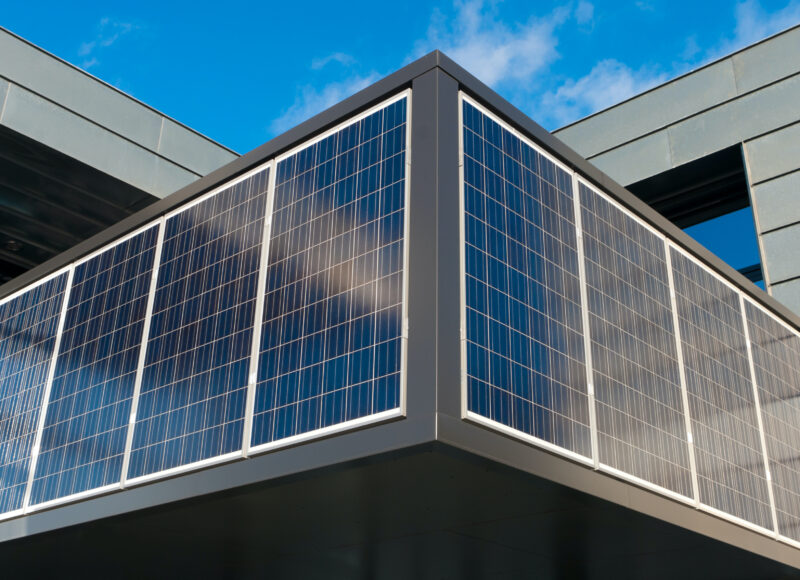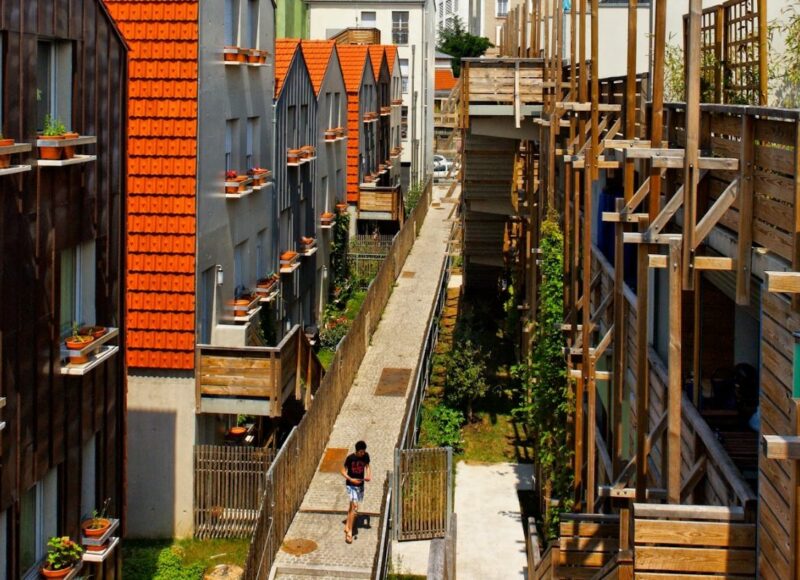Photovoltaic technology: solutions to optimise its carbon footprint and environmental performance
Recent technological progress in the photovoltaic industry, together with the availability of increasingly reliable assessment tools and data provide answers to questions regarding whether photovoltaic modules are appropriate in a project aiming to reduce its environmental footprint. We met Romain Besseau, researcher at Les Mines in Sophia Antipolis, and Pauline Grougnet, director of ActivSkeen, an engineering and design consulting company specialised in photovoltaic envelopes, to find out more about the development of the photovoltaic market and existing solutions to ensure a very low carbon footprint and to avoid other environmental impacts.
What are the market trends for photovoltaics and building-integrated photovoltaics (BIPV) and are there prospects for technological developments?
Romain Besseau: Globally, the photovoltaic (PV) sector has enjoyed exponential growth up to now. Installed capacity is clearly on the rise year on year, but we are also seeing it occur at a faster pace each year.
In mainland France, the scenarios recently presented by RTE, France’s transmission system provider, all take into account a significant increase in photovoltaic energy generation. This ranges from 70 GWc of installed capacity by 2050, i.e. a seven-fold increase compared to 2018 in a scenario with a high renewal of nuclear power plants, to more than 200 GWc, which means installed power multiplied by 22 in a scenario without any new nuclear plants and a small-scale extension of the existing nuclear fleet. Whichever decision is made, the photovoltaic industry will have a role to play in the energy future of mainland France. This role will be even more significant in the overseas territories.
Lastly, PV energy self-consumption is enjoying development, particularly thanks to a drop in PV energy production costs. It is becoming increasingly frequent that it is more profitable to consume PV energy that can be produced locally rather than electricity from the grid. Widespread individual or collective self-consumption meets part of energy requirements. This share will grow when consumption matches PV production on the same time level, and therefore sun exposure.
Pauline Grougnet: The photovoltaic ecosystem is very dynamic, supported by increasingly stringent regulations, committed stakeholders and citizens and a wide range of applications and services.
In France, large ground-based solar power plants pull up the photovoltaic market, but practices and searches for land are changing. Indeed, the conversion of former sites that are demilitarized, industrial or polluted is also favoured. A striking example is the commissioning of a 15MWc plant in October 2020 on the former site of the “AZF” factory.
Solar power will also be rolled out on a massive scale on building roofs, encouraged by the French Climate and Resilience Law which requires that, from 1st January 2023, new buildings used for commercial, craft and industrial purposes in addition to warehouses and hangars, with a surface area greater than 500 m², and office buildings with surface areas greater than 1000 m², will have to vegetalise or collect solar power over 30% of their surface.
This law will affect the photovoltaic shade structures installed on any new car parks built from 1st January 2024 and will concern 100% of their surface.
Other means of installing major production capacity are also being targeted by the leading energy producers and suppliers (Akuo Energy, EDF, TotalEnergies, etc.), as are agrivoltaics and floating PV systems.
To a lesser degree, building-integrated photovoltaics (BIPV) [1]is emerging at various paces in European Union Member States. Switzerland., Germany and Austria have many references, but self-consumption, electric mobility of occupants and citizens and the new tariff arrangement of 8 October 2021 are set to contribute to large-scale development in France.
As regards technology, new formats of silicon cells are emerging on the market. For the time being, the final size has not been the subject of consensus within the profession, but the 158mm cell will be withdrawn in favour of 161mm, 182mm and even 210mm cells! However, given the current situation of supply difficulties, particularly for semi-conductor materials, industrial players are considering alternatives to create photovoltaic materials and cells such as organic films for instance.
Lastly, a wide range of services rounds off these developments: PPAs (Power Purchase Agreements), third-party financing, green and citizen energy cooperatives, the rental of photovoltaic modules for individuals, etc.
Photovoltaic technology raises questions regarding its carbon footprint. Which solutions have been developed by researchers and companies to ensure a positive carbon balance?
Romain Besseau: The issue of PV’s carbon footprint is important and must be studied seriously. While it’s true that once installed a PV system does not give rise to any greenhouse gas emissions (GHG), PV panels do not grow on trees. It takes energy and materials to produce the components of a PV system, and that indirectly causes GHG emissions. The estimation of the industry’s carbon footprint must take into account emissions that occur from the extraction of raw materials to the end of the system’s life. To achieve this, we use a method called the life cycle assessment (LCA). Many LCAs in the photovoltaic industry result in carbon footprint estimates ranging from 40 to 100 gCO2eq/kWh. For reference, the carbon footprint of the European electricity mix is around 400 gCO2eq/kWh.
Actually, PV carbon footprint estimates are based on old data sets, which results in an over-estimation of the industry’s carbon footprint. As part of my research work, I was able to demonstrate that the data sets considered for the LCA correspond to the PV industry’s performance in 2005. This is problematic given the progress made by the PV industry since this period when it was just starting out. I developed a model configured to take into account the improved efficiency of PV models, the reduction of the mass of components such as inverters, the performance of the silicon refining process and PV cell production process. The model shows how this brings about a two- or three-fold reduction in the PV industry’s carbon footprint. The levers to further reduce it are to continue to improve panel yield, the efficiency of crystalline silicon production processes and the use of electricity that is as close to zero-carbon as possible for the production of these cells, a process which still consumes a lot of energy, though much less than in the past.
Pauline Grougnet: We can go further in our efforts to reduce this footprint by incorporating PV systems as a functional element of a building’s envelope and not just as an addition, a complement with the sole purpose of producing energy. The photovoltaic envelope approach pools resources (i.e. integration systems) and uses surfaces and applications that were planned in the construction design, whether or not they are active!
Which focal points should be considered regarding environmental impacts other than carbon?
Romain Besseau: GHG emissions are far from being the only environmental issue to be considered. The LCA is used to study both the impact on climate change and the impacts on ecosystems, human health and resources in the broadest sense, covering land, water and minerals.
As discussed before, PV’s carbon footprint is low over its life cycle. PV will cause impacts on ecosystems and human health, particularly during the extraction of raw materials and in refineries and factories that produce PV modules.
There are many preconceived ideas about the use of rare earth magnets in PV panels. The overwhelming majority of the market is based on silicon cells and this technology does not require any rare earth elements. Some specific technologies use rare earth elements, but for extremely specific applications such as the space industry which uses multilayer panels. The PV industry does, however, use mineral resources such as copper for the production of wires and inverters, and steel and aluminium for PV module mounts. This is why these systems need to be recycled efficiently.
The PV industry may have a significant spatial footprint when installed on the ground. Yet the potential in building roofs is far from being exhausted, and this is even more the case for building façades. I believe it is important to promote the installation of PV systems on surfaces that are already urbanised. Lastly, there are considerations and experiments underway to develop joint uses between PV electricity generation and agriculture.
One aspect that is worth discussing and assessing is the impacts that are potentially caused by the weather dependency of PV generation. Storage facilities may become necessary to meet consumption demand, which adds a layer of environmental impacts.
Pauline Grougnet: Thanks to this photovoltaic envelope approach, PV also boasts positive spin-offs that are sometimes largely unknown! Naturally, the primary advantage is that by using surfaces in addition to the roof, the PV installation’s installed capacity is increased, thereby contributing to the creation of positive-energy houses, without having to resort to extra land coverage. Next, the existing solutions proposed by BIPV industry players offer a wide range of aesthetic finishes in line with the surrounding area, particularly when the building must fit aesthetic and landscape constraints of protected sites. Lastly, in semi-transparent applications, PV solutions can improve comfort for occupants and reduce energy requirements. Sensibly positioned on a curtain wall, a double skin façade or an atrium, PV cells will not only generate electricity but will act like thousands of tiny sun-breakers. Firstly, these solutions let natural light in, while controlling glare and heat transmitted, resulting in enhanced comfort for occupants. Secondly, by optimising the layout of cells, air-conditioning loads can be reduced by 20% to 25% under an atrium or glass roof.
What are the benefits of a dialogue between researchers and companies and what could come of these discussions?
Romain Besseau: I had the opportunity of working in the photovoltaic sector before moving onto research, which gave me an in-depth knowledge of the industry. I became aware that the data used to assess the industry’s carbon footprint was obsolete. Without this knowledge, I would probably not have questioned how representative these data sets are and would have used them as they were. Fostering dialogue between researchers and companies prevents such situations. Lastly, research also needs funding. It can provide expertise to companies and create value through informed decisions.
Pauline Grougnet: Researchers and companies must continue to work together. Research must be connected to the market, to practices, to the “real life” of projects and the users and consumers of studies and results. Supported by research, companies remain aware of the techniques and technologies that are being developed and in doing so can anticipate changes in their practices, methods and organisation to remain in control and competitive. If companies do not have the time or resources to do so, in particular for consulting firms like ActivSkeen, it is really in their interest to consult researchers or more broadly institutes such as the lab recherche environnement to update their databases, explore case studies and develop simulation tools. This saves time, and also puts them in a position to offer more robust technical assistance to their customers, who are often not well-versed in this field. Thanks to Romain’s work, and above all thanks to its dissemination and accessibility for non-experts, ActivSkeen has been able to update its data and methods to assess the carbon footprint of the photovoltaic systems that we scale and recommend every day. There are many developments following on from this dialogue, but broadening the scope of the environmental footprint analysis by considering integration systems and energy uses would be an interesting avenue to pursue.
[1] Definition of BIPV (Building-Integrated Photovoltaics): Replacing the conventional materials used in the building’s envelope by photovoltaic materials that serve exactly the same function as the materials replaced.




